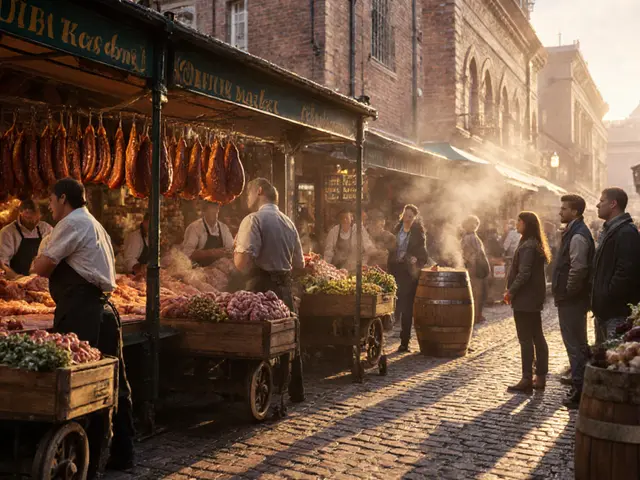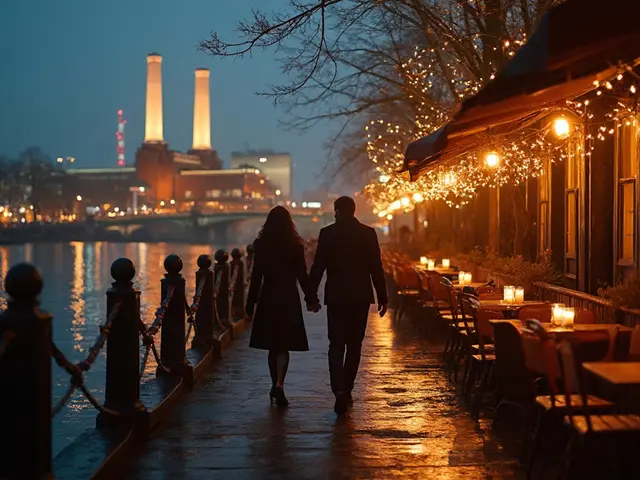If there’s one constant pulse in central London, it’s the steady hum of life in Hyde Park. It isn’t just another patch of green—this place feels woven right into London’s identity, clocking in more history, drama, music, and moments of wild politics per square metre than just about any other space in the city. Forget being a mere ‘park’; think giant open-air living room, free concert hall, stage for protests, lovebirds’ retreat, playground, and sporting ground. Locals know—it’s the soul of London outdoor life, and it never stands still.
Why Hyde Park is More Than Just a Park
Stepping through any of Hyde Park’s grand gates, the thing that hits you first isn’t the size, although at over 350 acres, it’s easily one of the largest royal parks in London. No, it’s the realisation: people here do everything. Suits cross for a quick Pret lunch, joggers race past art students painting by the Serpentine, and a stone’s throw away, yoga mats roll out under ancient trees. Ask a Londoner and they’ll rattle off stories—school sports days, first gigs, proposals by the Peter Pan statue, or runs ruined by a surprise downpour.
Hyde Park isn’t only central geographically; it’s central culturally. It’s been the spot for everything from mass suffrage rallies to the legendary Rolling Stones concert in 1969 that drew in an estimated 250,000 fans. Formal pageantry fills its summer with Guards on horseback, while spontaneous moments—ice cream vans, bubble blowers, impromptu street musicians—keep things delightfully unpredictable. Not to mention the Serpentine Lake, a go-to for wild swimmers and pedalo crews all summer.
There’s a reason people talk about ‘Hyde Park Corner’ as much as Big Ben. Speakers’ Corner, on the park’s northeast edge, is living proof that debate and dissent have a home here. Every Sunday morning, since the 19th century, it’s where anyone (famously Karl Marx, George Orwell, and even Marc Bolan gave it a go) can grab a soapbox. Expect everything from the profound to the bizarre. Grab a coffee from one of the nearby independent carts—often roasting up fresh Monmouth or Union beans—and just watch history unfold.
Hyde Park Through the Ages: Royalty, Rebellion, and Revolution
Dating back to 1536 when Henry VIII nabbed land from Westminster Abbey to hunt deer, Hyde Park has always mirrored London’s mood. Kings popped in for a spot of sport, but over centuries, the ordinary Londoners made it their own. The Great Exhibition of 1851—think the original World’s Fair—drew millions here, with the glittering Crystal Palace erected right in the middle. Even today, the Albert Memorial nods to Prince Albert, who masterminded the spectacle still echoed in every modern Hyde Park event.
Political history? This park’s basically lived through it all. From Chartists in the 1800s demanding voting rights, right through the suffragettes chaining themselves to railings, to anti-war protests in the 20th century, Hyde Park has always been at the epicentre. That tradition is still alive. Recent years have seen climate activists, anti-Brexit rallies, and even soccer fans gathering en masse after England matches—all watched over by rows of lime, oak, and plane trees.
Of course, Hyde Park isn’t only about dramatic history. There’s something oddly comforting about the rituals it hosts yearly. The Winter Wonderland festival turns the park into a whirl of neon lights and German sausages when it’s cold out, while summer weekends offer up open-air film screenings and food festivals. Keep your eyes peeled for pop-up yoga classes run by local gyms, and free family events near the Serpentine Gallery. Trust me, the annual Swim Serpentine isn’t for the faint-hearted, but it’s a uniquely London badge of honour.
Hidden Corners and Local Traditions
Most guides steer you straight to the Serpentine and Speakers’ Corner, but there’s so much tucked away. Hyde Park’s Rose Garden—just off Hyde Park Corner—is at full bloom come June and July. If you like an early-morning walk, the scent alone is worth dragging yourself out of bed for. A little further along, the Dell plays host to grey herons and, if you’re lucky, a flash of kingfisher blue early in the morning. In spring, the daffodils around the statue of Achilles explode in yellows brilliant enough to rival anywhere in the UK.
For food: yes, you can visit the traditional cafés (the Serpentine Bar & Kitchen is a crowd-pleaser for families, with great views of the lake). But for a more local touch, grab a sandwich from Gail’s Bakery just outside the Lancaster Gate entrance, perfect for a sneaky riverside lunch. If you’re around in the afternoon, keep an eye out for itinerant churros and Belgian waffle trucks near the bandstand, a Londoner’s secret treat post-rowboat ride.
Horse-riding might sound very ‘royal’ but in Hyde Park, it’s reassuringly down-to-earth. The Riding School caters to everyone from beginners to seasoned riders, often weaving past envious cyclists on Rotten Row. Speaking of bikes, don’t forget London’s ‘Boris Bike’ hire points. The park’s broad cycle paths make for easy, traffic-free riding, with enough space even on sunny weekends. Early mornings are the best time to beat the crowds if you crave some peace with your pedal.
Events, Performances, and Life After Dark
Londoners know Hyde Park as a year-round venue for major events. The BST Hyde Park music festival attracts global headliners—think Elton John in his farewell tour, Kylie Minogue’s disco throwback, or past legends like Paul Simon. Tickets go fast, but you can often picnic just outside the paying fences and still catch the music drifting over. Evenings in summer have a festival glow; small local gigs at the bandstand give a taste of up-and-coming London talent, totally free.
For sports fans, Sunday mornings bring an armada of running clubs and cycling groups weaving around the Serpentine. Tennis courts, open-air gyms, pétanque pitches, and rowing boats dot the landscape. Every summer, cyclists in the 100-mile Prudential RideLondon event thunder right along the park’s main avenues, offering a true spectacle. During colder months, park regulars swear by wildflower walks, foraging workshops, or outdoor yoga hosted by local teachers.
Safety and lighting mean Hyde Park is surprisingly welcoming after dark—just stick to main paths. The Marble Arch end sometimes hosts light art installations, with the Diana Memorial fountain glowing softly after dusk. Feel like a midnight stroll? You’ll be in good company; lots of Londoners use Hyde Park as the scenic shortcut home, rain or shine.
Visiting Hyde Park: Practical Tips and What’s New
Visiting Hyde Park is a doddle. All four corners plug into the Tube (Marble Arch, Lancaster Gate, Knightsbridge, and Hyde Park Corner). If you’re cycling, Santander Cycles docks sprinkle the park edges. Official opening times cover sunrise to midnight, so there’s plenty of time for an early run, a late-night stroll, or quick dog-walk after work. It’s dog-friendly, but do check signage—some areas like the Lido or specific gardens have leash rules.
- The Serpentine Lido is open for public swimming from May to mid-September. Don’t forget a pound coin for the lockers, and expect lines on weekends—locals line up early.
- The Rose Garden’s best in late spring, but the wildflower meadows near Bayswater Road are a top spot for a quiet lunch all summer.
- For events, check the Royal Parks’ website. Big gigs sell out, but midweek yoga, fitness bootcamps, and art tours are open to all and often free.
- Bring cashless payment—the park’s ice cream vans and mobile cafés almost never accept cash these days.
- If you’re planning a picnic, bring a blanket—benches fill up in great weather, but there’s always new turf to claim.
Here’s a quick data snapshot of Hyde Park and its attractions to plan your trip:
| Attraction | Open Months | Ticket Price | Typical Wait Time |
|---|---|---|---|
| Serpentine Lido | May–September | £5 | 15–30 mins (weekends) |
| Rose Garden | April–July | Free | None |
| Speaker’s Corner | Year-round (best on Sundays) | Free | None |
| Riding School | Year-round | From £60/1hr | Book ahead |
| BST Hyde Park Music Festival | June–July | £70–£300 | Sell out months prior |
Hyde Park is a snapshot of London—diverse, buzzing, sometimes chaotic, but always open. Next time you’re nearby, ditch the Tube just one station early and wander through. Chances are high you’ll stumble on something new, discover a corner nobody’s written about, or simply soak up a real slice of London city life. It’s Hyde Park—and whatever you expect, trust me, it’s more than that.


